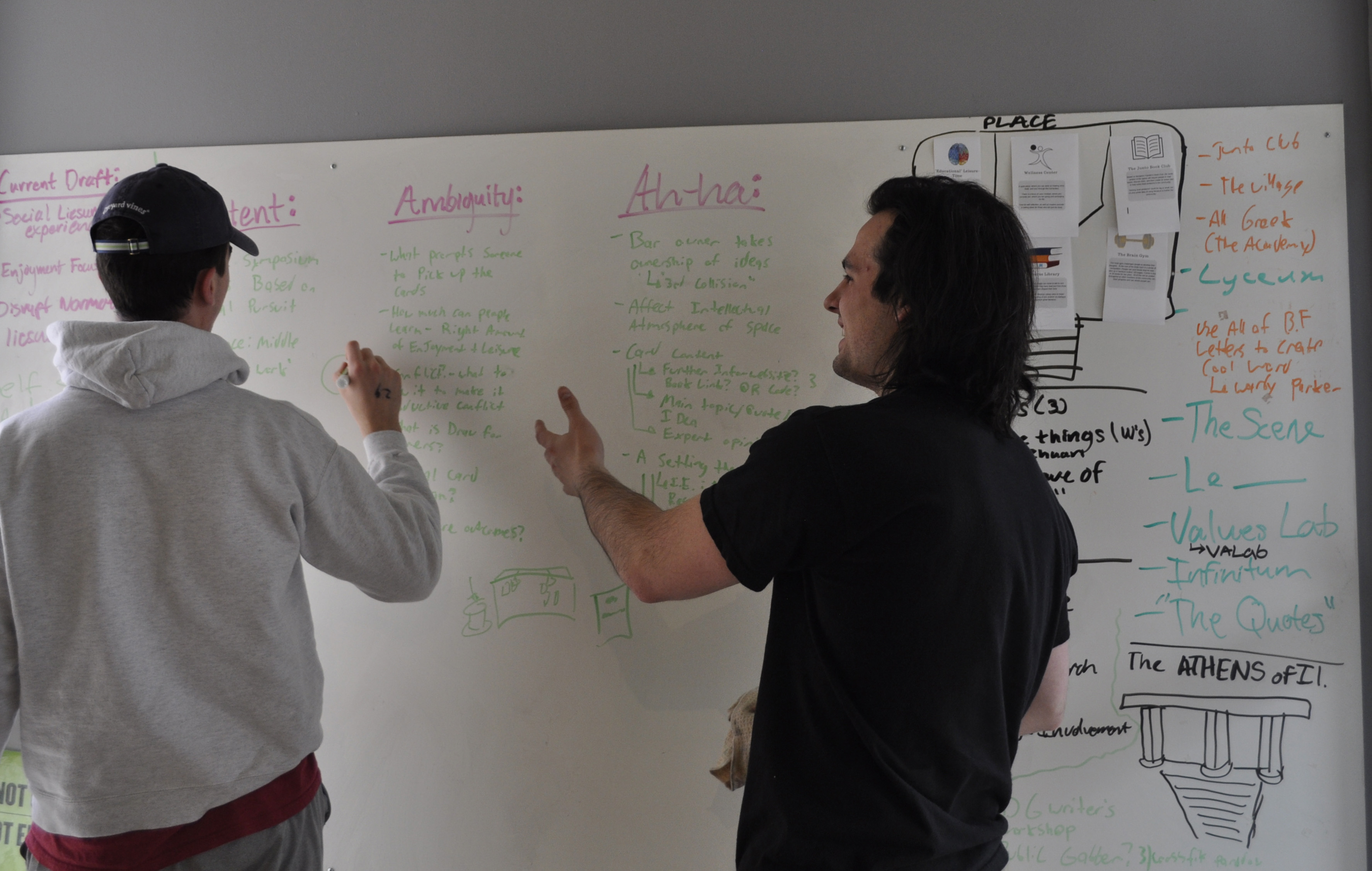IACT: Creativity for Tomorrow

Crossing Disciplines Through Collaboration
By Riley Hart ‘19
I first heard about IACT when I was a freshman. What initially piqued my interest was the erosion of traditional academic disciplines. As someone who did not feel completely at home in my discipline at the time, I was drawn to this concept. Though it took me two years before I enrolled in my first IACT course, this discovery prompted my decision to question my major and frame my education towards a person I wanted to become rather than a discipline I would try to fit in.
What I loved about my first IACT courses (ACT I and II) was the idea that I would be encouraged to work with people from diverse backgrounds in order to solve a common problem. In today’s professional world, it is imperative to be able to seek out others and utilize their expertise. No sole professional has everything needed to have impact on human problems. IACT teaches us to break down traditional disciplinary boundaries and inspire purpose-based ideas for change. It is quite a change of pace being asked how my experiences, expertise, and dreams all influence the frame I use to view the world. Typical classroom barriers like student-teacher, content-distraction, and known-unknown quickly dissolve, freeing the mind of expectations and doubt: the results are students who are not afraid to act upon the what if.
IACT is about making important connections. In other classes, we either consult the teacher, the text, or your fellow disciplinarians. Real-world problems are not in textbooks, there are no teachers to consult, and a myriad of perspectives is necessary to solve modern problems. In reality, problems are multifaceted, diverse, and difficult. It only makes sense to teach students to consult atypical stimuli in order to implement effective solutions to problems.
At IACT we often talk about a propensity towards action. This is one of the most beneficial skills to develop today and is never mentioned in any traditional syllabus. As a humanities student, learning how to apply my talents will be at the forefront of every job prospect. IACT teaches us to be on our toes and to lean forward. What I have noticed about my cohort and I is that we love to roll up our sleeves and seek to immediately impact our work. In group projects, the IACT students are the first ones seeking to manipulate course content, stretch assignment parameters, and identify points of real world impact.
In my own experience, my IACT mindset makes me a better student, better professional, and better human. It teaches me to take learning outcomes out of the textbook, apply them to my personal and professional problems, and actionize my empathy for other human beings. IACT helped me gain comfort in crossing disciplines, confidence in dealing with ambiguity, and contentment in the direction of my life and education.
At the Institute of Applied Creativity for Transformation (IACT), our vision is to create a mindset of possibility that disrupts the world through 21st century citizenship. We believe in creative changemaking with a sustainable, humanity-centered focus that blends educational and vocational frameworks for self-determination and transdisciplinary transformation.
IACT is home to the nation’s first undergraduate certificate in Applied Creativity for Transformation. Open to undergraduate students of any major, the certificate is a first step in achieving the University of Dayton’s vision of innovation, applied creativity, entrepreneurship and community engagement for the common good. Riley is apart of the second graduting cohort, working towards a deliverable for this semester's collision expo. For more information about IACT at ArtStreet, call 937-229-5101 or visit go.udayton.edu/iact
